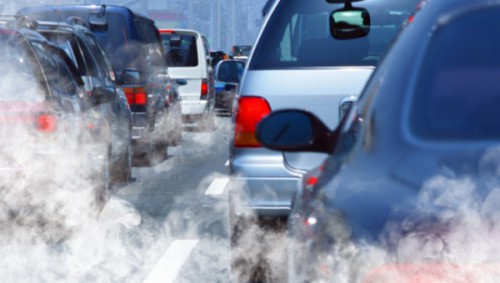
By Leanna Sweha
The Legislature is considering two bills to extend Cap-and-Trade beyond its 2020 sunset. One of these bills, AB 378, would make Cap-and-Trade less about greenhouse gases and more about local air pollution.
The 2006 law that authorized Cap-and-Trade notes that a co-benefit of reducing greenhouse gases is a reduction in local air pollution – criteria and toxic pollutants that are regulated under federal and state clean air acts. The law also prohibits greenhouse gas reduction programs from interfering with efforts to reduce local air pollution.
Supporters of AB 378 assert that Cap-and-Trade interferes with efforts to reduce local air pollution and is therefore fundamentally flawed. They rely on a study that says Cap-and-Trade has led to increases in criteria and toxic air pollution from large industrial facilities. The argument is that this is primarily because these facilities can obtain allowances and offsets for their greenhouse gas emissions instead of directly reducing them.
Supporters of AB 378 argue that the only way to ensure the co-benefit of climate change programs is to require direct reductions of greenhouse gases at large facilities like refineries and cement plants.
Under AB 378, a Cap-and-Trade facility causing a “significant health impact” from its criteria or toxic emissions could be ordered to make specific direct greenhouse gas emissions reductions. The Air Resources Board also could adopt criteria and toxic emissions standards for individual facilities and deny free allowances to any facility not meeting these standards.
There’s a small problem, though. The jury is still out on the assumption that underpins AB 378. A recent state EPA study on the relationship between greenhouse gas emissions and local air pollution from large Cap-and-Trade facilities was unable to conclude that the design of Cap-and-Trade leads to increases in local air pollution. This contradicts the study that supporters of AB 378 like to uphold.
Another weakness with AB 378 is that it focuses on large industrial facilities when mobile sources – cars, truck, trains and ships – pose equal or greater health risks across the state. Mobile sources are the largest contributors to the criteria pollutants ozone and Particulate Matter (PM) 2.5, as well as to diesel PM, which is a toxic air contaminant.
Statewide, about 12 million Californians breathe air that exceeds the federal limits for ozone and PM 2.5. Millions of Californians also live near freight corridors – ports, rail yards and warehouse centers. They face exposure to high levels of diesel PM, which is responsible for about 70 percent of total air toxics risks, including cancer. Research has shown that infants and children are particularly sensitive to diesel PM. And, every Californian who drives or rides in a vehicle is exposed to diesel PM.
So, if we are going to focus on the co-benefits of reducing greenhouse gas emissions, why not look to transportation?
California has regulations to reduce pollutants from passenger vehicles and encourage electrification, but vehicle turnover will take decades. The federal government, not California, has jurisdiction over the engines in interstate and international commerce from which much of the future emissions reductions must come. And when it comes to trucks, Governor Brown just signed a gas tax bill that restricts the state’s ability to regulate diesel engines.
But California has multiple non-regulatory strategies and incentive programs to reduce emissions from vehicles and to modernize freight operations. Revenues from Cap-and-Trade auctions could be prioritized to fully fund these programs.
Yes, disadvantaged communities generally face higher health risks from air pollution. Cap-and-Trade has a system for dealing with incidental increases in local air pollutants – it’s called the Adaptive Management Plan.
UC Berkeley economist and market-based regulatory expert Meredith Fowlie got it right when she wrote, “the current debate about the injustice of greenhouse gas emissions trading is fundamentally concerned with the adequacy of other policies that regulate other (local) pollutants.“
Fowlie also warned, “If we try to address both of these important, but fundamentally different problems with one policy, we’ll likely end up with a policy that does neither job well.”







This is a good summary of the issues.
On the cited study, I can see several immediate problems.
The first is that the authors clearly do not understand what has been happening in the electricity sector. Natural gas emissions have been up since 2013 for three reasons, and will settle back to the trend of reduction very soon. Those reasons are 1) a five year drought that reduces hydropower (and natural gas makes up the difference) 2) the sudden closure of San Onofre Nuclear Generating Station (SONGS) and 3) the Aliso Canyon gas storage leakage. Their analysis of this is either naive or disingenuous.
Second, they fail to tie the net changes in Figure 4 to the relative tonnage in Figure 5. Throw out electricity and I’m pretty sure that the overall emissions are lower, not higher.
And third they fail distinguish in how PM emissions differ by industry. For example, GHG emissions from cement come from the process itself (use of lime) and does not produce much PM. Again, they oversimplified a complex relationship.